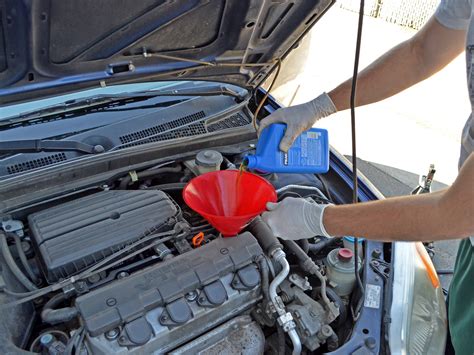Protecting Your Investment: Check Your Honda Civic's Transmission Fluid
Your Honda Civic is more than just a car; it's an investment. Keeping it running smoothly and extending its lifespan requires regular maintenance, and one often-overlooked aspect is checking and maintaining your transmission fluid. Ignoring this crucial step can lead to costly repairs down the line. This guide provides a comprehensive overview of why checking your Honda Civic's transmission fluid is vital and how to do it correctly.
Why is Checking Transmission Fluid Important?
Transmission fluid serves several critical functions: lubrication, cooling, and cleaning. It lubricates the moving parts within the transmission, reducing friction and wear. It also cools these parts, preventing overheating and damage. Finally, it cleans away debris and contaminants, keeping the transmission operating efficiently. Low or dirty fluid compromises these functions, leading to premature wear and eventual transmission failure – a costly repair that can easily run into thousands of dollars.
How Often Should I Check My Honda Civic's Transmission Fluid?
The recommended frequency for checking your transmission fluid depends on your Civic's model year and whether it has an automatic or manual transmission. Consult your owner's manual for the manufacturer's specific recommendations. Generally, however, checking every 3,000-5,000 miles or every three months is a good practice, especially for older vehicles. If you notice any unusual noises, slippage, or difficulty shifting, check the fluid immediately.
What are the Signs of Low or Contaminated Transmission Fluid?
Several warning signs indicate a problem with your transmission fluid:
- Dark or burnt-smelling fluid: This suggests the fluid is old and contaminated, losing its lubricating properties.
- Rough shifting: Difficulty shifting gears, slipping, or harsh engagement are all indications of transmission problems often linked to low or contaminated fluid.
- Whining or groaning noises: Unusual noises coming from the transmission usually point to internal damage caused by inadequate lubrication.
- Transmission fluid leaks: Visible leaks under your car are a clear sign of a problem that needs immediate attention.
How to Check Your Honda Civic's Transmission Fluid
Note: The specific procedure may slightly vary depending on your Civic's model year. Always consult your owner's manual for detailed instructions specific to your vehicle.
-
Warm up the transmission: Run your engine for about 10-15 minutes to allow the transmission fluid to reach its operating temperature. This ensures an accurate reading.
-
Locate the dipstick: The transmission dipstick is usually located near the engine, but its exact location varies depending on the model. Refer to your owner's manual for precise location.
-
Remove and check the dipstick: Carefully remove the dipstick, wipe it clean with a lint-free cloth, and reinsert it fully. Remove it again and check the fluid level. The dipstick usually has markings indicating the "full" and "low" levels.
-
Assess the fluid's condition: Examine the fluid's color and smell. New fluid is typically bright red or pink. Dark brown or burnt-smelling fluid is a major warning sign.
-
Add fluid if necessary: If the fluid level is low, carefully add the correct type of transmission fluid recommended in your owner's manual. Never overfill.
What Type of Transmission Fluid Does My Honda Civic Need?
Using the wrong type of transmission fluid can damage your transmission. Always consult your owner's manual to determine the correct type and specification of fluid for your Honda Civic's transmission. Using the incorrect fluid can void your warranty.
What if My Transmission Fluid is Low or Contaminated?
If you find that your transmission fluid is low or contaminated, it's crucial to address the issue promptly. Adding fluid may temporarily solve a low-level problem, but if the fluid is contaminated, a complete fluid change or even transmission repair might be necessary. Consult a qualified mechanic for diagnosis and repair.
Can I Change the Transmission Fluid Myself?
While changing transmission fluid is possible for experienced DIY mechanics, it's a more complex procedure than checking the fluid level. Improper procedures can lead to further damage. Unless you have extensive automotive experience, it's best to leave transmission fluid changes to a professional mechanic.
By regularly checking your Honda Civic's transmission fluid, you're taking a proactive step in protecting your investment and ensuring your vehicle's longevity. This simple maintenance task can save you from costly repairs down the road. Remember to always consult your owner's manual for specific instructions and recommendations tailored to your car.

